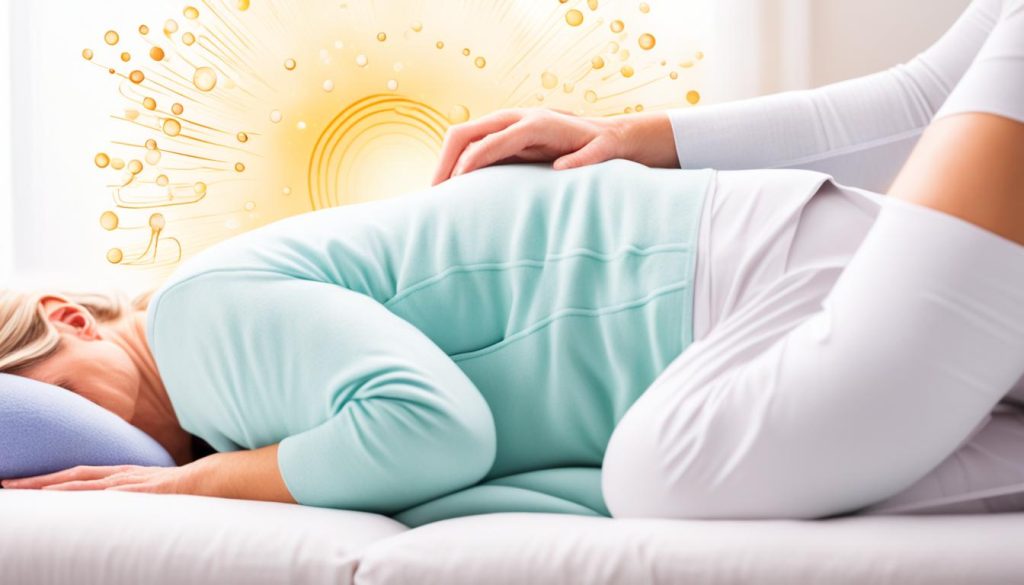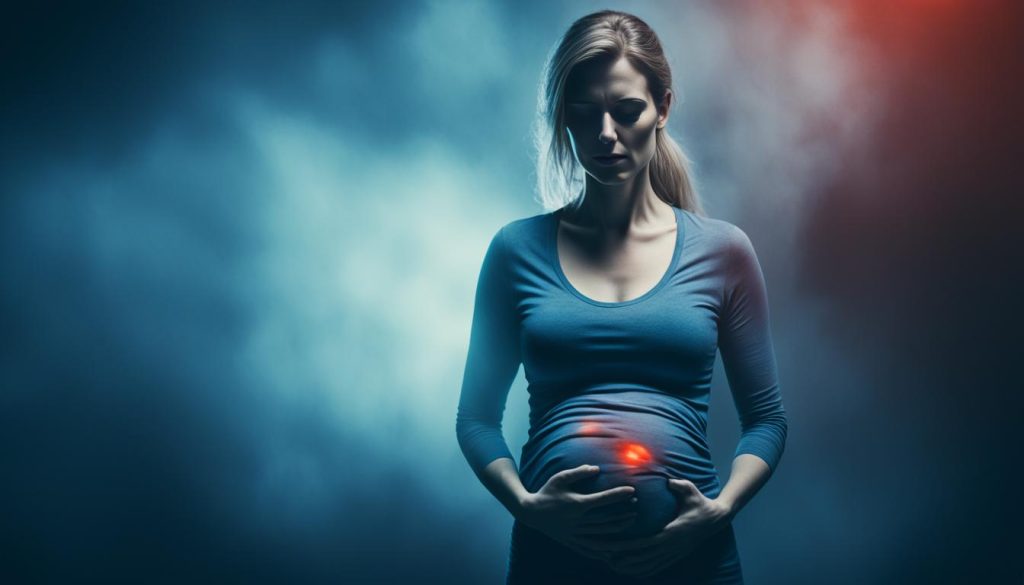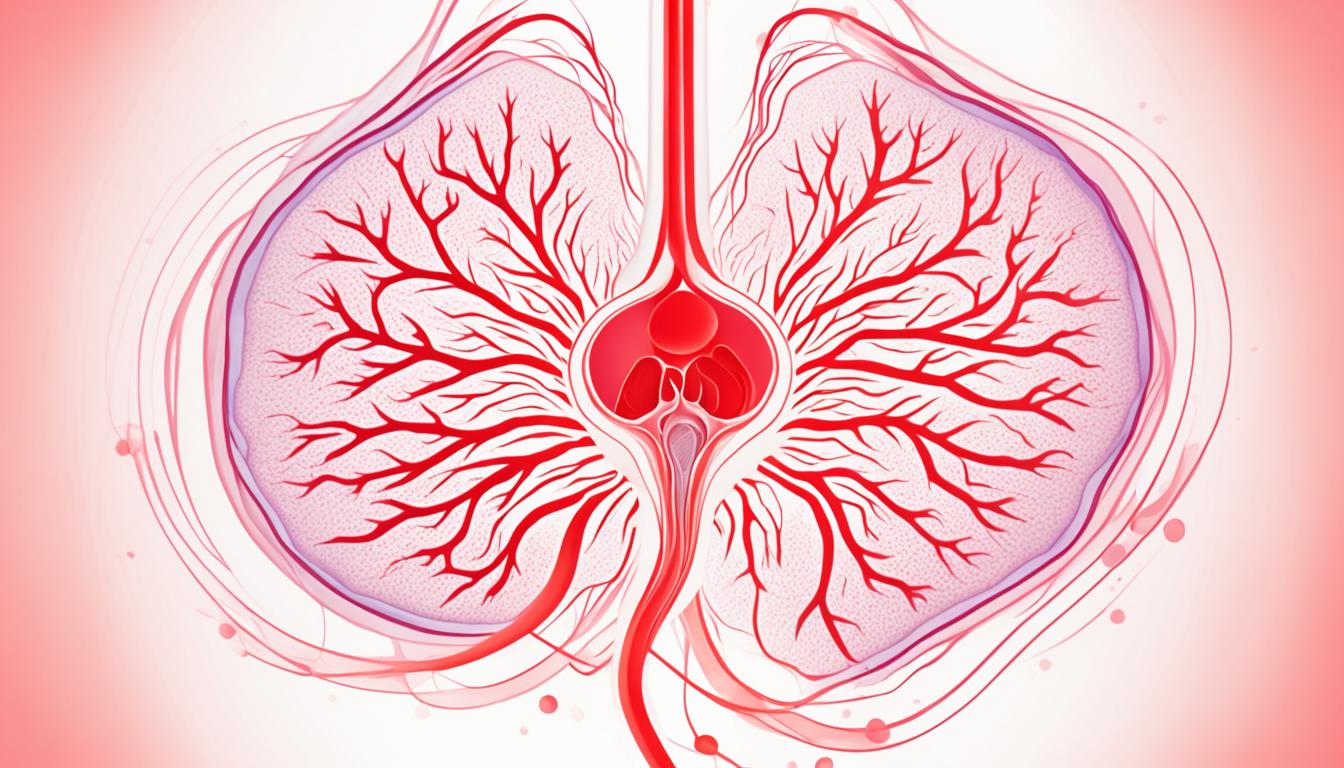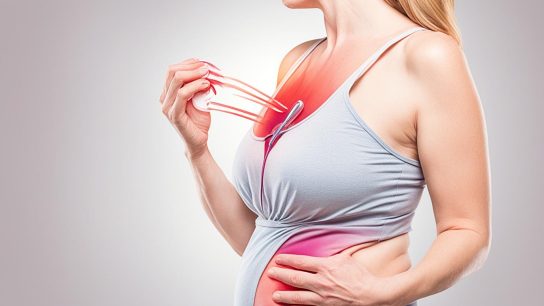Welcome to our informative article on the causes and relief of pain in the left ovary. If you’ve been experiencing discomfort or wondering why you have pain in your left ovary, you’ve come to the right place. Our expert insights will help shed light on this common concern.
There are various reasons why you may be experiencing pain in your left ovary. Understanding these causes can empower you to seek appropriate relief and make informed decisions about your health. From ovulation pain to menstrual cramps, ovarian cysts to endometriosis, we will explore the possible reasons behind your left ovary discomfort.
It’s important to remember that experiencing pain in the left ovary can be a symptom of different conditions. Consulting with a healthcare provider is crucial to determine the exact cause and find the most suitable relief for your specific situation.
Continue reading to delve deeper into the different causes of left ovary pain, their associated symptoms, and the relief options available. Don’t let the discomfort hold you back from leading a happy and healthy life.
Why Do I Have Pain in My Left Ovary?
Ovulation Pain (Mittelschmerz) and Menstruation
Ovulation pain, or mittelschmerz, is a common experience that occurs during a woman’s monthly menstrual cycle. It typically occurs when the ovary releases an egg, resulting in a dull ache on one side of the pelvis. This pain is often accompanied by other symptoms such as vaginal discharge or light bleeding.
Similarly, many women experience menstrual cramps, which can also cause discomfort in the area around the ovaries. These cramps usually occur before or during the menstrual period and may range in intensity from mild to severe.
To alleviate ovulation pain and menstrual cramps, there are several effective management strategies. Over-the-counter pain medications such as ibuprofen or acetaminophen can provide relief from the discomfort. Additionally, applying heat therapy to the lower abdomen can help relax the muscles and alleviate pain.

Managing Ovulation Pain and Menstrual Cramps
Here are some ways to manage ovulation pain and menstrual cramps:
- Take over-the-counter pain medication such as ibuprofen or acetaminophen to alleviate pain and reduce inflammation.
- Apply a heating pad or hot water bottle to the lower abdomen to relax the muscles and soothe the pain.
- Engage in gentle exercise, such as walking or yoga, to promote blood flow and reduce pain.
- Practice relaxation techniques, such as deep breathing or meditation, to relieve stress and tension that can exacerbate pain.
- Try using herbal remedies, such as chamomile or ginger tea, which can have a calming effect and reduce discomfort.
Remember, if you are experiencing severe or persistent ovulation pain or menstrual cramps, it is important to consult with a healthcare provider for a proper diagnosis and personalized treatment plan.
Ovarian Cysts and Endometriosis
Ovarian cysts and endometriosis are two common conditions that can cause pain in the left ovary. Understanding these conditions is crucial for proper diagnosis and effective management of left ovary pain.
Ovarian Cysts
Ovarian cysts are small, fluid-filled sacs that can form on or within the ovaries. These cysts are usually noncancerous and may go unnoticed as they often do not cause any symptoms. However, when ovarian cysts become large, rupture, or twist, they can lead to significant pain and discomfort in the abdomen, including the left ovary region.
Diagnosing ovarian cysts typically involves a combination of pelvic exams, ultrasound imaging, and other diagnostic tests. Treatment options for ovarian cysts vary depending on the size, type, and symptoms. In some cases, the cysts may resolve on their own without intervention. In other instances, hormonal medications or even surgery may be recommended to remove or reduce the cysts.
Endometriosis
Endometriosis is a chronic condition where the tissue similar to the lining of the uterus, called endometrium, grows outside of the uterus, including on the ovaries. This abnormal growth can cause pain, inflammation, and the formation of scar tissue. Left ovary pain is often experienced by individuals with endometriosis.
Diagnosing endometriosis requires a comprehensive medical evaluation, including a pelvic exam, imaging tests such as ultrasound or MRI, and potentially even a surgical procedure called laparoscopy. Treatment options for endometriosis may include hormonal therapies, pain management strategies, and in more severe cases, surgery to remove the abnormal tissue.
It’s important to consult with a healthcare professional if you experience left ovary pain or suspect you may have ovarian cysts or endometriosis. They can provide an accurate diagnosis and guide you through appropriate treatment options to alleviate your symptoms and improve your quality of life.

Pelvic Inflammatory Disease and Ectopic Pregnancy
Pelvic inflammatory disease (PID) and ectopic pregnancy are two conditions that can cause left ovary pain. Understanding the causes, symptoms, diagnosis, and prevention methods for these conditions is essential for maintaining reproductive health.
Pelvic Inflammatory Disease (PID)
Pelvic inflammatory disease is an infection that affects the organs in the pelvis, including the ovaries. It is typically caused by sexually transmitted infections such as chlamydia or gonorrhea. If left untreated, PID can lead to long-term complications like chronic pelvic pain, infertility, or ectopic pregnancy.
Common symptoms of PID include:
- Pain in the lower abdomen
- Painful sex
- Irregular or heavy vaginal bleeding
- Unusual vaginal discharge
- Fever and fatigue
Diagnosis of PID involves a pelvic exam to check for tenderness, inflammation, or abnormal discharge. Doctors may also recommend blood tests, swabs, or imaging tests like ultrasound or MRI.
To prevent PID and reduce the risk of left ovary pain:
- Practice safe sex by using condoms or being in a mutually monogamous relationship
- Get regular screenings for sexually transmitted infections
- Treat any infections promptly and follow the prescribed course of antibiotics
Ectopic Pregnancy
Ectopic pregnancy occurs when a fertilized egg implants and grows outside the uterus, usually in the fallopian tubes. This condition is a medical emergency as it can cause severe pain, internal bleeding, and damage to the fallopian tubes.
Common symptoms of ectopic pregnancy include:
- Sharp or stabbing pain on one side of the abdomen
- Vaginal bleeding or spotting
- Dizziness or fainting
- Shoulder pain
Diagnosing ectopic pregnancy involves a pelvic exam, blood tests to check hCG levels, and ultrasound to locate the implanted embryo. Immediate medical attention is necessary to prevent complications.
Preventing ectopic pregnancy is not always possible, but some steps can reduce the risk:
- Follow safe sex practices to prevent sexually transmitted infections
- Receive early and regular prenatal care
Left ovary pain diagnosis and prevention for both PID and ectopic pregnancy require awareness, prompt medical attention, and following healthcare provider’s recommendations.

Conclusion
Pain in the left ovary can be caused by a variety of factors, including ovulation pain, menstrual cramps, ovarian cysts, endometriosis, pelvic inflammatory disease, ectopic pregnancy, ovarian tumors, ovarian cancer, ovarian torsion, and ovarian remnant syndrome. If you are experiencing pain in your left ovary, it is crucial to consult with a healthcare provider to determine the underlying cause and find appropriate relief.
Treatment options for left ovary pain may include pain medication, hormonal medications, surgery, and other management techniques. Your healthcare provider will be able to recommend the most suitable treatment for your specific condition. It is important to remember that severe or persistent pain in the left ovary should always be evaluated by a medical professional to rule out any serious underlying conditions or complications.
By seeking medical attention and receiving a proper diagnosis, you can take the necessary steps towards finding relief from left ovary pain. Remember to communicate any symptoms and concerns to your healthcare provider, who will guide you through the appropriate treatment options and management strategies to alleviate your discomfort and improve your overall well-being.




